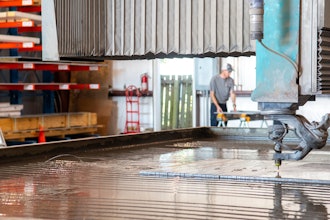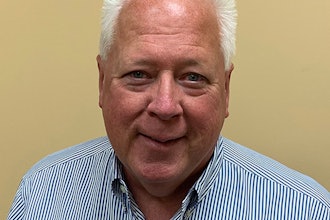
Since its founding in 1963, Dynapower has been at the forefront of the development of custom and standard rectifier solutions for the automotive, aerospace, mining, water and waste treatment, steel, chemical, defense and finishing industries worldwide. More recently, the company is seeing a trend in the industry where customers are finding value in refurbishing their rectifiers. In an attempt to reduce the downtime associated with this, Dynapower has begun offering an onsite rectifier refurbishment program, where its field technicians can modify equipment in place in order to significantly reduce production disruption – but that’s not the only benefit. We sat down with Matt Paul and Remington Schieffer of Dynapower to learn more about this finishing industry trend.
IEN: Give us some reasons why your customers are finding rectifier refurbishment to be more and more compelling?
Remington Schieffer: There are two main reasons. The equipment may be in a not-too-advantageous location. We’ve got customers who build power supplies into walls, or set up on roofs, and in order to physically remove this from the facility and replace it, it would require major structural changes. They’d have to cut down walls or remove tanks full of chemistry and, of course, stop production.
On the other side of refurbishment – the engineering side – means usability and upgrades and bringing in technology from the process to the customer’s fingertips – to liberate them from the ‘not know’ of what’s going on in their facility. The refurbishment option allows them to be flexible with their installation base, but also allows them to upgrade fully functional pieces of equipment with more technology.
IEN: How does Dynapower’s refurbishment program work?
Matt Paul: We can do field refurbishment and in-house refurbishment. Field refurbishment eliminates removal and installation time and you also eliminate the impact to the surrounding departments by bringing material out and in. This allows customers with space challenges removing equipment, to still have an option for refurb. That’s the biggest piece.
The other option is we build the customer one brand new piece of equipment, ship it and install it. Then we start what we call a ‘recycle program.’ So, if a customer has ten pieces of equipment, they’d buy one new one, we’d put it in place and then they’d send the one they took out back, we’d refurbish it, ship that one back and install it, and then pull the next one. We go down the production line and, in the end, they wind up with one spare, refurbished, ready-to-go piece of equipment that they can drop in if they ever had a catastrophic failure. And their only production loss is the time it takes to switch out equipment. This provides the least amount of down time and production loss
RS: If the customers have the flexibility, we can take in their equipment, refurbish it, upgrade the components inside as necessary, and return it to them from our in-house facility. Our integrated test facility and full repair department allow us to refurbish equipment, provide new paint and any engineering upgrades they require, and return it with a warranty similar to our new equipment.
IEN: Is this practice widespread within your competitive space?
RS: This kind of coordinating and facilitating, where we’re trying to not disrupt their production – we’re kind of leading the industry in that style of process. We’re hoping to make sure we retain our reputation of being customer focused in doing that.
MP: A lot of competitors are doing repair, but not the kind of refurbishment like we are where we’re sending out a piece of equipment with a refreshed warranty, and it looks like new. There’s also no one besides us, to our knowledge, that’s refurbishing in the field.
We had one customer that didn’t want to spend money on new equipment and we kept telling them to refurbish it by sending it back to (our facility in) Vermont. But they had built their plant around the equipment, so they would have had to go through multiple walls to get the gear out. And after two years of them continuing to lose production, they said ‘you have to find a solution to get these things back to another 30 years of service quality without taking them out of the building.’ That’s when we sat down with our production and engineering staff and said ‘how do we build them new gear in place?’
We came up with a plan to build the material in our facility in Vermont, ship it in subassemblies, assemble the product in the customer’s line, but then also test it in place and be able to integrate it. That’s something that nobody else is doing.
RS: When you look at equipment liability: in a similar way that you can’t get parts for a 1969 Chevette anymore, when you have a piece of equipment in the field running for 20-30 years, the replacement parts for the electronics are no longer available. With some of these customers, we’ve been able to downsize the equipment needed to perform the task from a 4X6 foot panel, down to a 2X2 setup with fully integrated PLC and all that data feeding back to their controller so they can monitor their equipment remotely. So, we have an engineering upgrade facet to this refurbishment program that really allows customers to bring the quality of the process up to the 21st century, even though they have perfectly viable 1980s gear.
IEN: Who is your target customer?
MP: Really, it’s anybody who uses power rectification… the biggest drivers in terms of industry are customers in the steel industry and customers in the metal finishing industry. And the reason is because they’re the hardest on their equipment. They’re the shops that coming back around in their product lifecycles.
RS: And (it applies to) our competitors’ equipment. Our engineering team can back into equipment that we haven’t designed and provide that engineering upgrade and refurbishment.
For more information, visit www.dynapower.com.





















